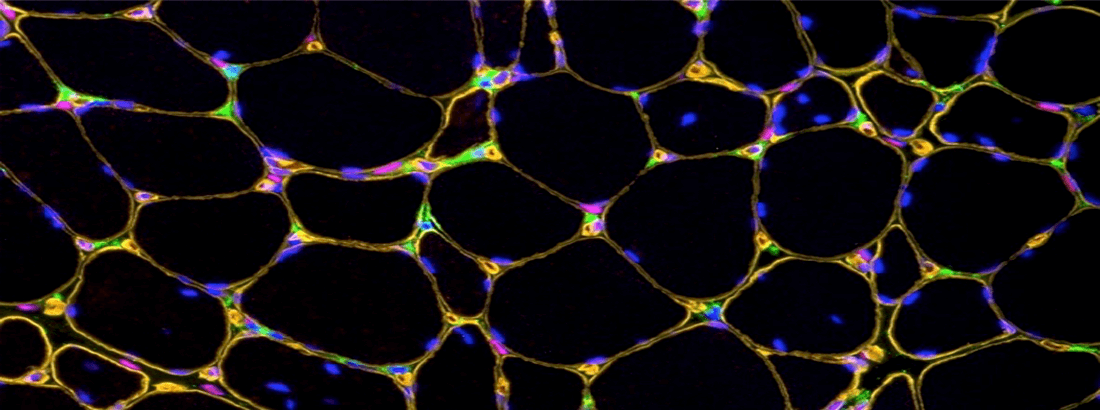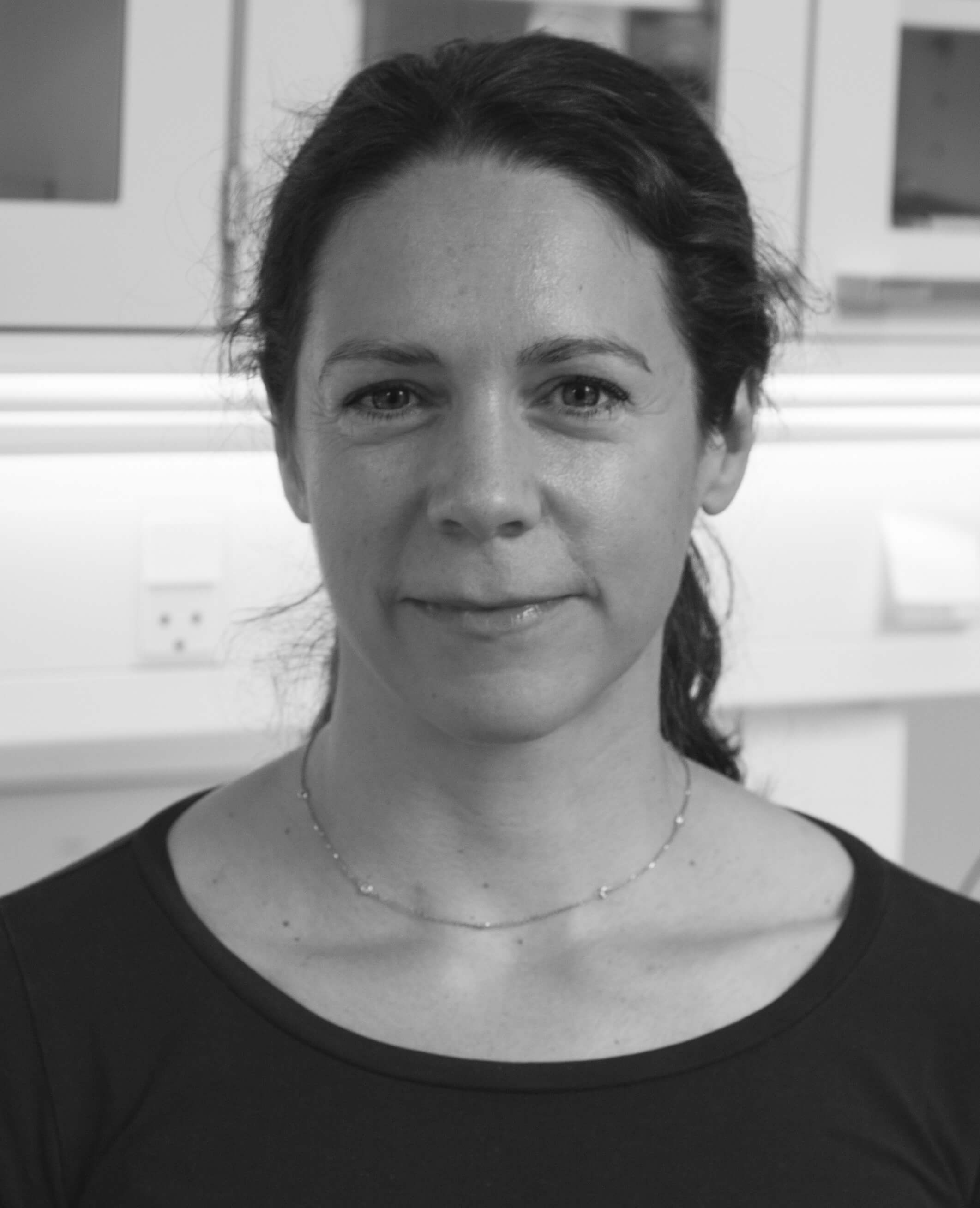Mackey Group

Skeletal muscle produces the forces required for movement of the human body. To perform this function, each muscle fibre is dependent on neural input to initiate contraction and a strong attachment to the skeleton for force transmission. An overall aim of our group is to understand how these two components of physical function are affected during the ageing process, and how physical activity can help to slow some of the decline.
Muscle fiber denervation
Muscle fibres depend on neural input from a motoneurone, not only for contraction but also for survival. A loss of neural input therefore leads to a loss of muscle fibres and is a major contributor to functional decline with ageing. We study the muscle-nerve communication and how exercise maintains this to preserve physical function in old age.
Repair of the human myotenindous junction
The point of attachment of the muscle fibre to the skeleton is the myotendinous junction. Despite a specialised morphology and molecular composition, the MTJ is also a frequent site of strain injury. We are analysing the human MTJ in the intact and injured states to understand its protein makeup compared to neighbouring muscle and tendon.
- Tamáš M, Pankratova S, Schjerling P, Soendenbroe C, Yeung C, Pennisi CP, Jakobsen JR, Krogsgaard M, Kjaer M, Mackey AL. Mutual stimulatory signalling between human myogenic cells and rat cerebellar neurons. Physiological Reports, 2021, 9(21):e15077.
- Jakobsen JR, Schjerling P, Svensson RB, Buhl R, Carstensen H, Koch M, Rindom Krogsgaard MR, Kjaer M and Mackey AL. RNA-sequencing and immunofluorescence of the myotendinous junction of mature horses and humans. Am J Physiol Cell Physiol, 2021, 321(3):C453-C470.
- Sondenbroe C, Andersen JL and Mackey AL. Muscle-nerve communication and the molecular assessment of human skeletal muscle denervation with aging. Am J Physiol Cell Physiol, 2021, 321(2):C317-C329.
- Soendenbroe C, Bechshøft CJL, Heisterberg MF, Jensen SM, Bomme E, Schjerling P, Karlsen A, Kjaer M, Andersen JL, Mackey AL. Key components of human myofibre denervation and neuromuscular junction stability are modulated by age and exercise. Cells. 2020, 9(4): 893.
- Karlsen A, Soendenbroe C, Malmgaard-Clausen NM, Wagener F, Moeller C, Senhaji Z, Damberg K, Andersen JL, Schjerling P, Kjaer M and Mackey AL. Preserved capacity for satellite cell proliferation, regeneration and hypertrophy in the skeletal muscle of healthy elderly men. FASEB J. 2020, 34:6418-6436.
- Karlsen A, Cullum CK, Norheim KL, Scheel FU, Zinglersen AH, Vahlgren J, Schjerling P, Kjaer M and Mackey AL. Neuromuscular Electrical Stimulation Preserves Leg Lean Mass in Geriatric Patients. Med Sci Sports Exerc. 2020, 52, 773-784.
- Bechshøft CJL, Jensen SM, Schjerling P, Andersen JL, Svensson RB, Eriksen CS, Mkumbuzi NS, Kjaer M & Mackey AL. Age and prior exercise in vivo determine the subsequent in vitro molecular profile of myoblasts and non-myogenic cells derived from human skeletal muscle. Am J Physiol Cell Physiol. 2019, 316(6): C898-C912.
For full list of publications, please see:
- Web of Science
- Google Scholar
Novo Nordisk Foundation:
- ”Rebuilding the human myotendinous junction piece by piece: understanding how muscle injuries are repaired"
Lundbeck Foundation Ascending Investigator:
- "Mechanisms behind the benefits of physical exercise on motoneuron survival with ageing in humans"
 Group leader
Group leader
Abigail Mackey
Clinical Professor
abigailmac@sund.ku.dk
Phone: +45 38 63 53 66
@AbigailMackey1
Group members
| Name | Title | Job responsibilities | Phone |
|---|
